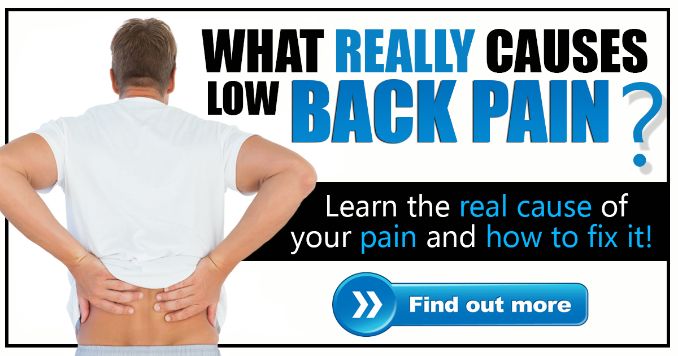
Are you struggling with herniated disc pain and wondering if exercises can help? It may sound surprising, but gentle exercises can ease herniated disc pain, reduce discomfort, improve flexibility, and promote healing without surgery.
In this article, we’ll guide you through 11 simple stretches and movements that can improve mobility and relieve pain, all while being easy on your body.
Herniated discs can heal on their own with conservative treatment, and exercise is one of the most effective conservative treatments. [4] It helps strengthen muscles, improve flexibility, reduce pain, and promote healing without the need for surgery.
This is supported by Dr. Rinta M. Babu, who explains that while the disc can heal by itself in most cases, physical therapy may be required for improvement. If symptoms persist, medications or surgery might be considered.
1. Cat-Cow Stretch

- Begin in a tabletop position with your hands under your shoulders and knees under your hips.
- Then, slowly arch your back and lift your head on an inhale, then round your back and tuck your chin on an exhale.
- Then alternate by inhaling as you slowly lift your head and arch your mid-back.
- Moreover, repeat the movement, alternating directions. Complete 3 sets in 5 repetitions.
2. Child’s Pose
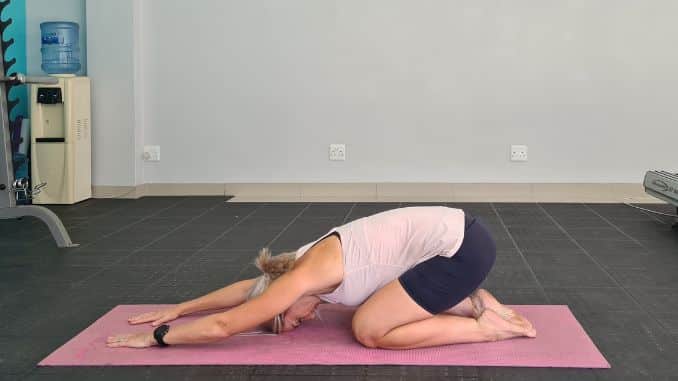
- Begin in an upright kneeling position on the floor with your knees closed together.
- Then, tighten your abdominal area. Shift your hips back to your feet, lower your upper body to the floor, and extend your arms overhead.
- Lower your forehead to the floor, relaxing your mid-back area for a light stretch.
- Moreover, take several deep belly breaths, in through your nose and out through your mouth.
- Relax and return to an upright sitting position.
3. Knee-to-Chest Stretch
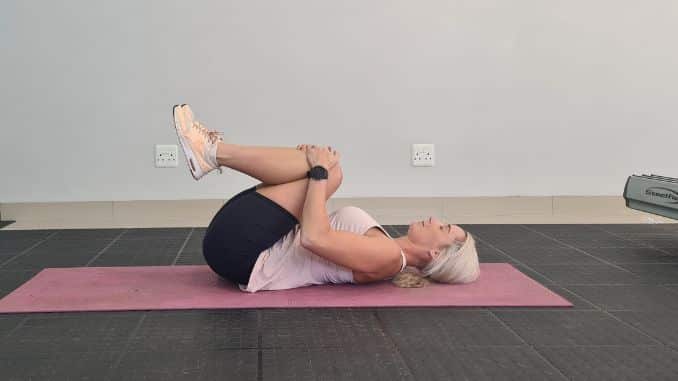
- Lie on your back on the floor with your knees bent and your feet flat.
- Then, raise both legs, holding your lower leg with both hands.
- Pull your knee closer to your chest to intensify the stretch.
- Hold the position for several deep belly breaths, in through your nose and out through your mouth.
- Moreover, relax, return to the starting position, and repeat the movement on the opposite side.
4. Pelvic Tilts
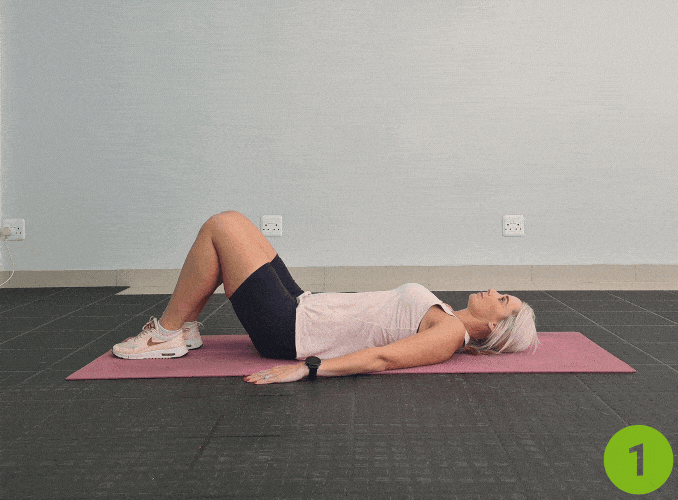
- Lie on your back on the floor with your knees bent and feet flat on the floor.
- Then, slowly roll your pelvis backward as if you were flattening out your spine.
- Hold this position for several deep belly breaths, in through your nose and out through your mouth.
- Moreover, slowly return to the starting position.
5. Seated Hip Forward Bend
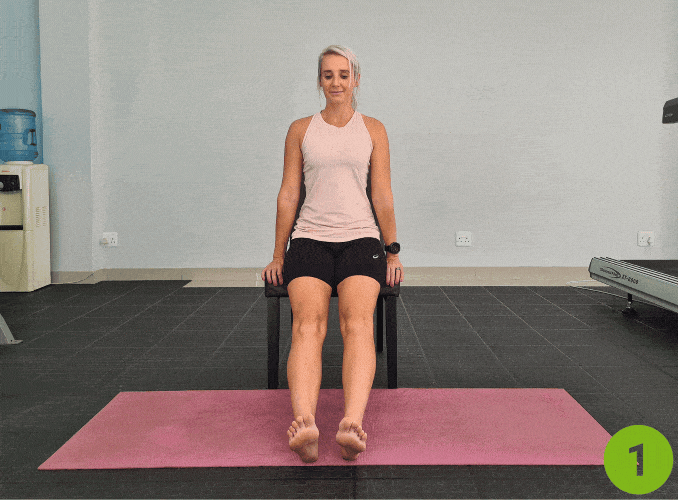
For this exercise, utilize the use of a chair, for support if needed.
- Begin in an upright sitting position on the edge of the chair, with your legs extended and hip-width apart, while maintaining good alignment with your upper body.
- Then, place both hands at each side of the chair, for support. Engage your core.
- Hinge at your hips to move your upper body forward while keeping your back straight.
- Moreover, hold this position for several deep belly breaths, in through your nose and out through your mouth.
- Relax and return to the starting position. Repeat the movement with 5 repetitions.
6. Seated Twists
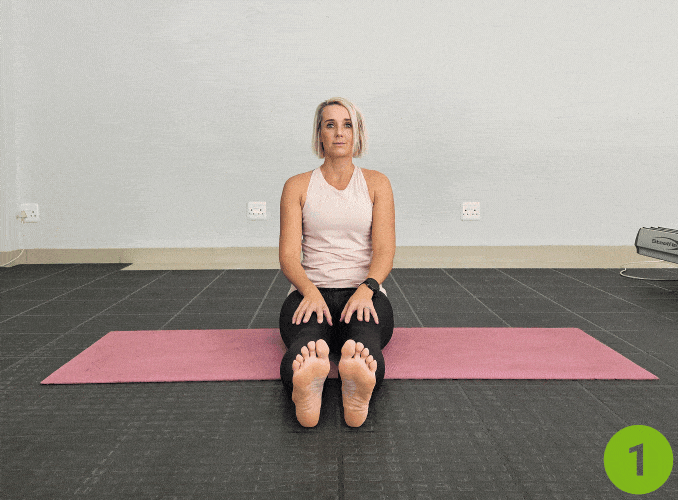
- Begin in an upright sitting position on the floor with your both legs extended, while maintaining good alignment with your head, shoulders, and hips.
- Then, place your hands on your knees. Contract your core then look back, placing other hand to the opposite side and twist your upper body to one side.
- Moreover, hold the position for 10 seconds. Return to the starting position and repeat the movement on the opposite side.
7. Belly Breathing
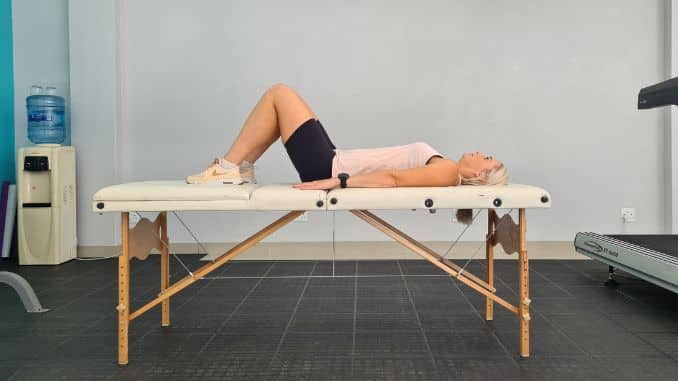
- Lie on your back with your knees bent and feet flat, relaxing your neck and upper body.
- Place your hands to the side. Inhale by filling your stomach with air.
- Exhale by breathing out any tension in the muscles around your upper body and lower back.
- Repeat the movement. Start with 1 set of 5 repetitions.
Moreover, perform this exercise in smooth, controlled breathing. The intensity is light.
The purpose of this exercise is to relieve back pain from herniated discs and decrease the stress and muscle tension in the back.
8. Abdominal Activation
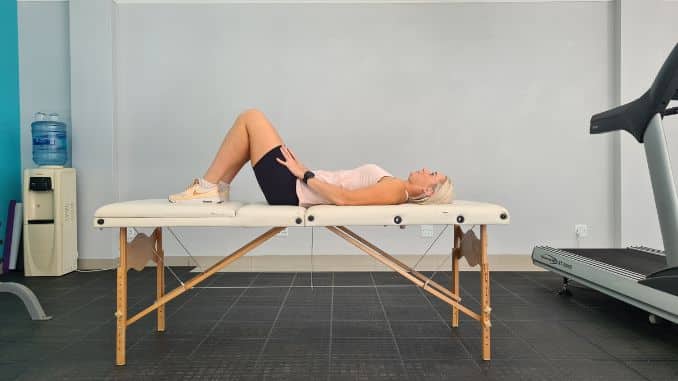
- Lie on your back with your knees bent and feet flat, relaxing your neck and upper body.
- Place your hands to the side. Contract your abdominal area and hold the position for 2-10 seconds.
- Relax your core and repeat the movement. Start with 1 set of 5 repetitions, ideally for 2-10 seconds.
Moreover, perform this exercise to relieve pain from a herniated disc in a smooth, controlled movement with a good hold at the end position. The intensity is light.
This exercise aims to help improve activation, endurance, and strength.
9. Cobra Pose

- Lie on your stomach with your feet shoulder-width apart and maintain good alignment with your head, shoulders, hips, and legs.
- Rest your forehead on your hands.
- Contract your core. Arch your back and lift your upper body on your forearms.
- Hold the position for a couple of seconds.
- Return to the starting position and repeat the movement.
- Start with 1 set of 5 repetitions.
Perform this exercise in a smooth, controlled movement with a good hold at the end position. The intensity is light.
This exercise aims to counteract disc herniation and help with mobility and movement in the low back area.
10. Upward-Facing Dog
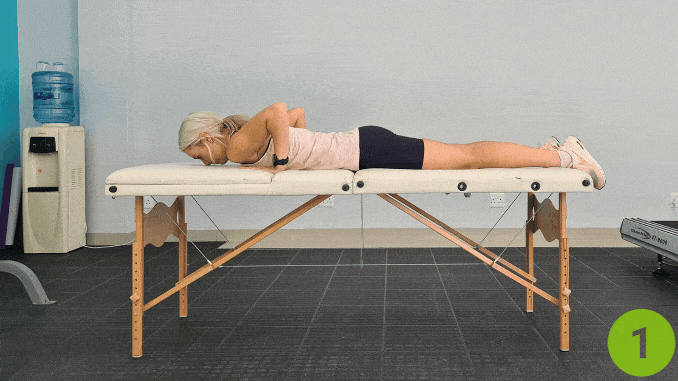
- Lie on your stomach with your feet shoulder-width apart and maintain good alignment with your head, shoulders, hips, and legs.
- Bend your elbows and place your hands at shoulder level.
- Tighten your abdominal muscles.
- Straighten your arms to push and arch your upper body up, while keeping your lower body in good alignment.
- Return to the starting position and repeat the movement.
- Start with 1 set of 5 repetitions.
Moreover, perform this exercise in a smooth, controlled movement with a good stop at the end position. The intensity is light.
This exercise aims to counteract disc herniation and help with mobility and movement in the low back, pelvis, and mid-back area.
11. Back Bend
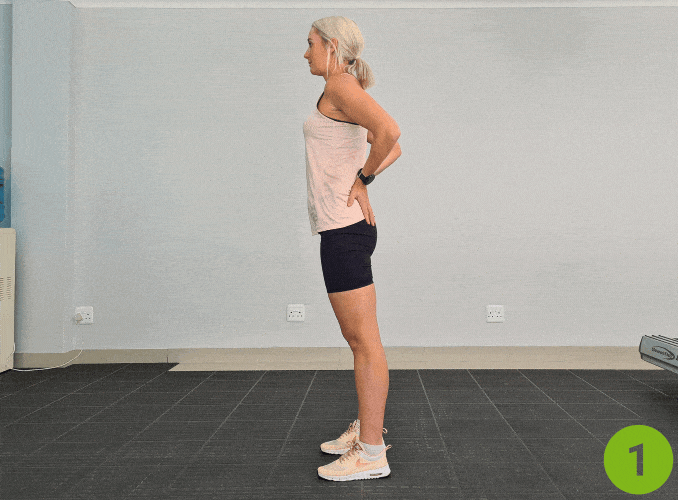
- Begin in an upright standing position.
- Place your hands on your lower back or upper pelvis area.
- Engage your core. Arch your back, focusing on the movement in your lower back area.
- Return back to the starting position and repeat the exercise.
- Start with 1 set of 5 repetitions.
Moreover, perform this exercise in a smooth, controlled movement with a good stop at the end position. The intensity is light.
This exercise aims to counteract disc herniation and help with mobility and movement in the spine, pelvis, and mid-back area.
What is a Herniated Disc?

A herniated disc [1] occurs when the soft, gel-like nucleus pulposus pushes through the tougher outer annulus fibrosus, potentially compressing adjacent nerves and causing symptoms like pain, tingling, and numbness. It can lead to dehydration and disk collapse.
Causes of Disc Herniation or Slipped Disc:
- Twisting and turning motions, especially with loaded weights.
- Lifting heavy objects frequently.
- Weak muscles.
- Trauma or previous accidents.
- Age-related wear and tear of the spine.
Herniated Disc Symptoms
- Difficulty bending [2] or flexing the spine.
- Pain radiating down one or both legs.
- Numbness or tingling in the legs or feet.
- Leg weakness.
- Increased pain when sitting, coughing, or sneezing.
- Restricted trunk flexion.
- Sciatica pain (pinched nerve).
- Loss of bowel or bladder control (rare, indicating cauda equina syndrome).
- Slower reflexes and impaired motor responses due to spinal nerve compression.
Specialists often recommend rehabilitation and prevention as opposed to surgery. A physical therapist can provide a tailored exercise program to alleviate symptoms and prevent further injury.
Dr. Todd Lanman, a renowned spine surgeon, emphasizes that the healing process for a herniated disc varies among individuals.
He notes that while a herniated disc may not heal completely, it can shrink or become less painful over time. Key indicators of healing include reduced pain and improved mobility. Dr. Lanman advises patients to monitor these signs and consult healthcare professionals for personalized guidance.
Tips for Exercising with Herniated Discs
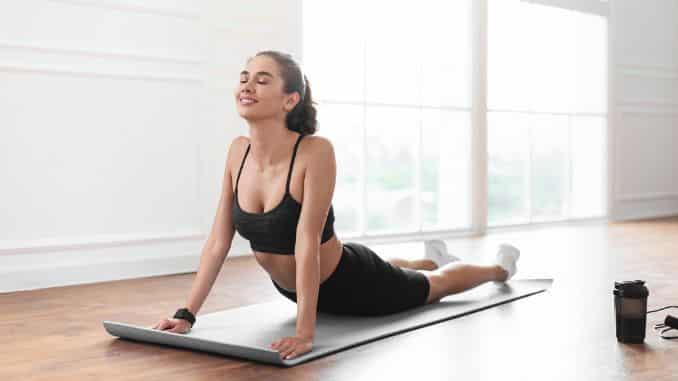
1. How Often to Exercise?
- For optimal results, perform herniated disc exercises 3-5 times a week, adjusting frequency based on your pain level and comfort.
- Consistency is key to improving flexibility, strength, and pain relief.
- Always consult a physical therapist or healthcare provider for a personalized schedule.
2. Importance of Proper Form
- To prevent worsening your condition, start slowly, listen to your body, and never push through pain.
- Correct form is crucial, so consider working with a professional before beginning any exercise routine.
Conclusion
Gentle exercises and stretches can help alleviate herniated disc pain, improve mobility, and strengthen the back. Understanding the symptoms [3] and causes of disc herniation allows for better prevention and management. Always start slowly, while maintaining proper form, and consult a physical therapist for a safe, personalized exercise plan.
If you are looking for something to help you overcome your back pain and get you back to pain-free workouts, check out Low Back Pain Solved.
FAQ’s
How can I get immediate relief from a herniated disc?
For immediate relief, try lying down with a pillow under your knees to reduce pressure on the lumbar spine. Applying ice for 20 minutes can help reduce swelling. Gentle stretching and breathing exercises may also help. Be careful not to overdo it, and consult a doctor if the pain is severe.
What is the best exercise for a herniated disc?
The best exercise includes gentle stretches that strengthen the abdominal muscles and improve flexibility in the lumbar spine. Pelvic tilts and cat-cow stretches are great options. These exercises help support the spine and reduce pressure on the herniated disc.
What not to do when you have a herniated lumbar disc?
Avoid activities that strain your back, such as heavy lifting or twisting. Don’t sit or stand for long periods without moving, as this can worsen the pain. Be sure to protect your lumbar spine by using good posture and lifting correctly.
Does numbness from a herniated disc go away?
Numbness from a herniated disc can improve over time with proper care, such as gentle exercises and strengthening the abdominal muscles. However, if numbness persists or worsens, it’s important to see a doctor to make sure there’s no nerve damage.

